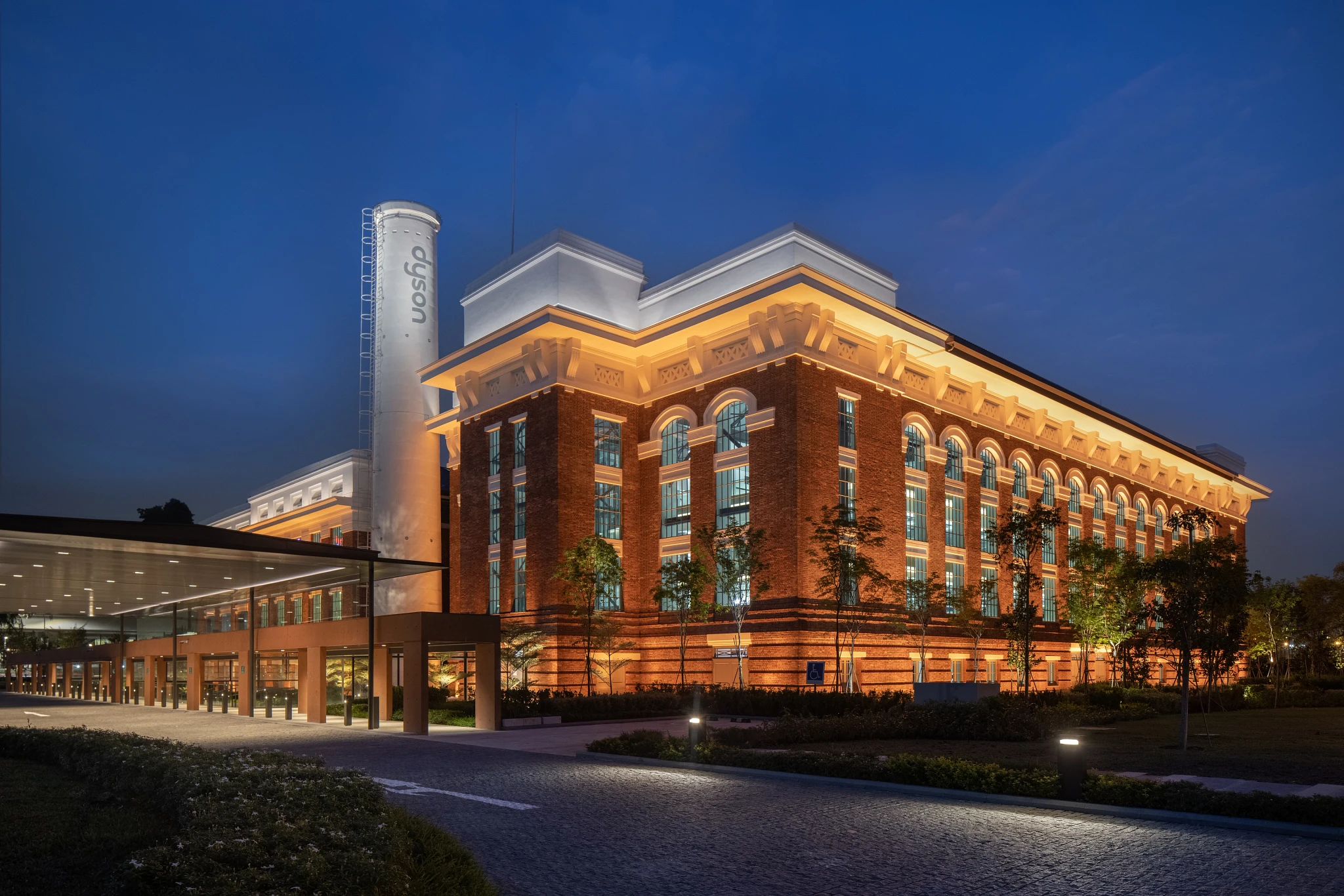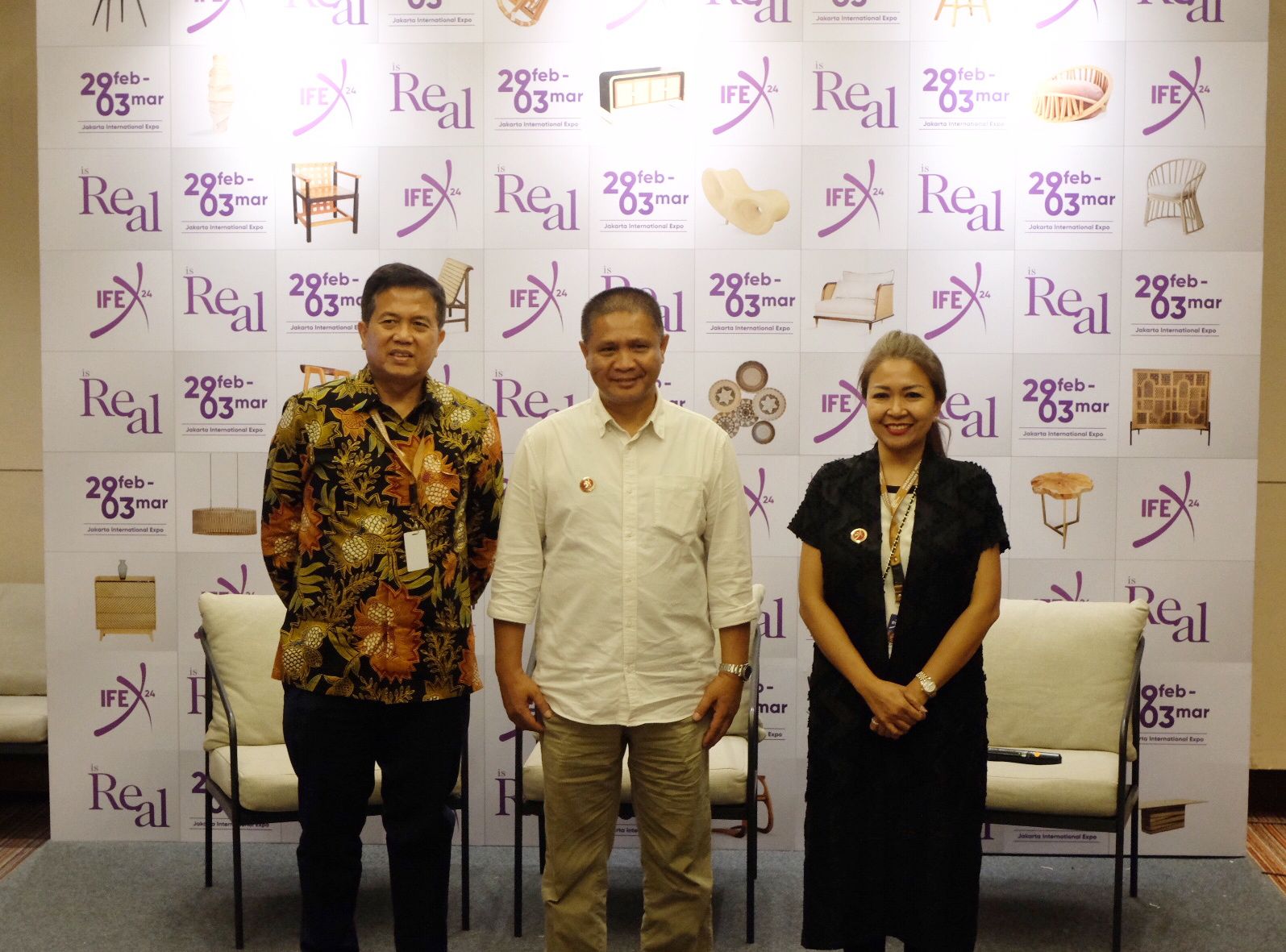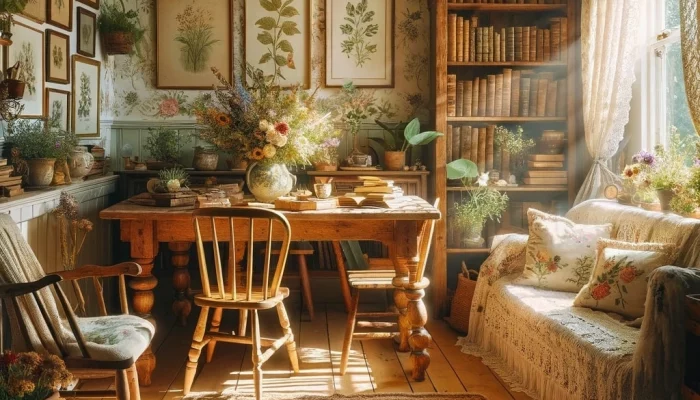Pertama kali tertarik dengan desain interior? Kezia Karin sempat tertawa saat ditanya pertanyaan ini. Ia takut orang-orang bosan dengan jawaban yang akan ia sampaikan. Maklum, selama hampir dua dekade berkarya, ia sudah sangat sering menjawab pertanyaan serupa. Namun, bagi kamu yang belum mengenal sosok Kezia Karin, saatnya berkenalan.
Sejak kecil, Kezia Karin bergaul akrab dengan buku-buku desain, dikelilingi oleh para arsitek dan seniman. Semuanya berkat profesi orangtuanya yang berkecimpung di dunia arsitektur. Ia sendiri lebih memilih menjadi seorang desainer interior. “Karena saya nggak mau kepanasan,” ujarnya sambil tersenyum saat ditemui redaksi Written di booth TACO yang ia desain untuk pameran Indobuildtech Part 2 pada awal Agustus lalu.
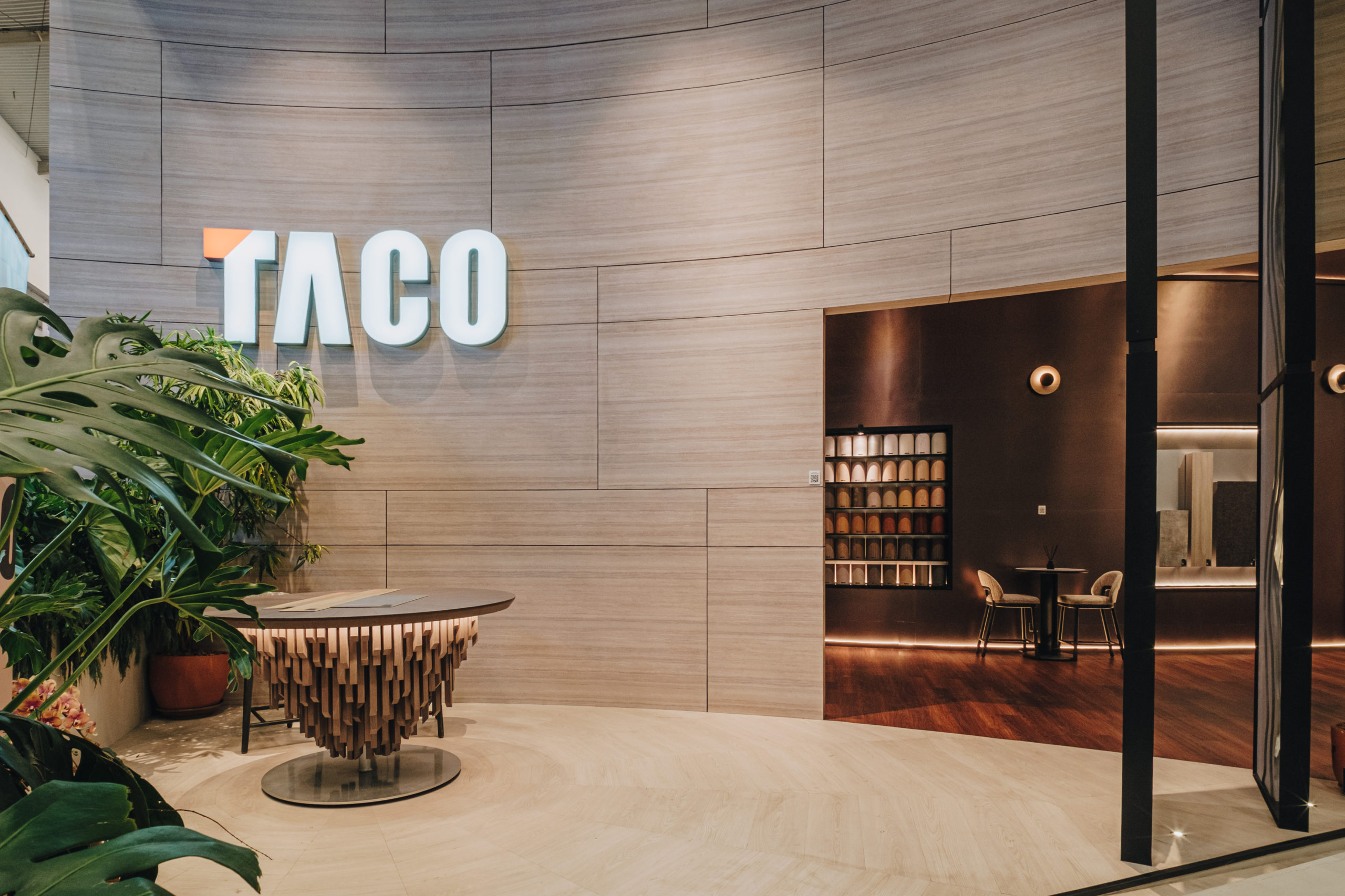
Alasan praktis itu tidak serta-merta membuatnya bersantai dan tidak kerja keras. Seusai kuliah di Surabaya, ia meneruskan magang di PTI Architects selama 6 bulan, melakukan pekerjaan freelance selama 2 tahun, sampai akhirnya mendirikan studio desain sendiri, Kezia Karin Studio.
Seperti apa perjalanan dan pemikiran desainer yang baru saja dianugerahi APSDA Young Designer of the Year ini? Simak dalam percakapan kami berikut
Tentang Perjalanan Sebagai Desainer Interior
Written: Mengapa akhirnya memutuskan membuka studio sendiri?
Kezia Karin (KK): Waktu itu acuan saya majalah desain dari luar (negeri). Sekitar 15-16 tahun lalu saya melihat perbedaan signifikan antara majalah luar dengan proyek lokal. Di sini kok sepertinya itu-itu terus desainnya. Saya kuliah di Surabaya waktu itu mungkin lebih ketinggalan lagi. Waktu itu desainer belum dihargai. Tapi harapannya dalam jangka waktu 5-10 tahun industri desain kita bisa catch up, dan ternyata benar.
Menurut saya desainer yang paling simpel adalah input harus sama dengan output. Kalau otaknya nggak pernah diisi, nggak pernah baca, nggak pernah lihat desain yang bagus, nggak mau mengakui kalau desain orang lain lebih banyak yang bagus dari kita, susah.
Jadi pas ngedesain itu sebenarnya adalah (mengeluarkan) isi library otak kita. Kalau kita isinya banyak dan kaya, keluarnya pun bisa macam-macam. Kita harus membuka diri dan nggak merasa yang paling tahu segalanya. Di saat kita merasa udah pintar, di situlah kita jadi stuck.
Written: Bagaimana pendekatan Anda di setiap proyek?
KK: Saat SMA saya mengambil jurusan IPA, jadi sudah terbiasa mengumpulkan data, baca data, dan analisa. Saya nggak akan bisa kerja jika nggak punya data apa-apa karena nggak tahu harus mulai dari mana. Klien seperti apa, timeline-nya kayak apa, site dan arsitekturalnya seperti apa. Data itu sangat penting.
Pendekatan dari sisi desain juga beda karena saya banyak belajar dari seniman. Jadi saya melihat ruang itu seperti karya seni yang bisa kita pakai. Peranan interior itu penting untuk membentuk perilaku masyarakat dalam menghargai ruang yang bagus. Ada hubungan erat antara perilaku kita sebagai masyarakat dengan desain. Makanya peranan kita sebagai desainer itu besar.

Written: Menurut Anda, seberapa penting seorang desainer punya karakter tertentu? Seberapa jauh implementasinya dalam proyek?
KK: Karakter desain kami berubah-ubah tiap proyek dan kalau bisa inginnya tidak dikenali. Saat orang bilang bahwa mereka nggak tahu ini proyek itu yang desain adalah Kezia Karin Studio (dalam konotasi baik), itu rasanya kami berhasil. Tujuan kami tercapai.
Kalau tanya ke saya karakter seperti apa yang harus dibangun, bagaimana kalau karakter diri dulu baru karakter desain? Banyak yang bertanya ke saya pertanyaan itu. Jawaban saya selalu: kalau saya membatasi diri saya sendiri dan cuma mau mengerjakan style tertentu aja, saya merasa rugi. Saya jadi nggak tahu saya bisa berkarya sampai seberapa jauh.
Jadi seberapa penting personal taste kamu dalam proyek klien kamu? QC saya bukan berdasarkan selera saya. Pride saya terletak di kenyataan apakah kliennya happy atau nggak, proyek selesai dengan baik atau nggak, dan proyeknya bagus dari sisi desain atau nggak.
Tentang Pengakuan Internasional dan Pentingnya Implementasi Budaya
Written: Bisa diceritakan tentang penghargaan yang baru didapatkan?
KK: APSDA (Asia Pacific Space Designers Association) memberikan beberapa penghargaan. Dua proyek kami dapat 1 gold (Louis Vuitton Savoir Faire exhibition) dan 1 bronze (Rumah di Jakarta). Tapi yang paling membanggakan itu penghargaan Young Designer of the Year. Saat dapat infonya saya sampai cek kembali ke panitia apakah ini benar.
Kenapa sangat rewarding karena rasanya ada yang menganggap karya kami ini benar. Artinya kami udah di track yang benar dan bisa melanjutkan dalam arah yang sama. Dulu desain kami dianggap terlalu idealis, nggak ada market-nya. Saat dijelek-jelekkan desainnya itu saya sempat mempertanyakan diri sendiri: “do you wanna go there?”
Written: Bagaimana dengan kegiatan di Manila Interior Design Summit?
KK: Saat itu saya diundang menjadi salah satu pembicara. Saya berbagi panggung dengan Lyndon Neri, Jonathan Matti, dan lainnya. Saya waktu itu membagikan tentang kolaborasi antara desain dan budaya.
Mengapa dalam mendesain kami banyak mengacu ke budaya Indonesia. Kepentingannya apa mengambil referensi dari budaya, cara mengartikannya seperti apa, dan sebagainya. Kita harus mengerti mengapa kita perlu belajar heritage dan bawa itu ke desain sehari-hari. Kita harus mengerti rumah tradisional, kain tradisional, ukiran, tempat makan, sandal, baju, apapun yang tradisional.
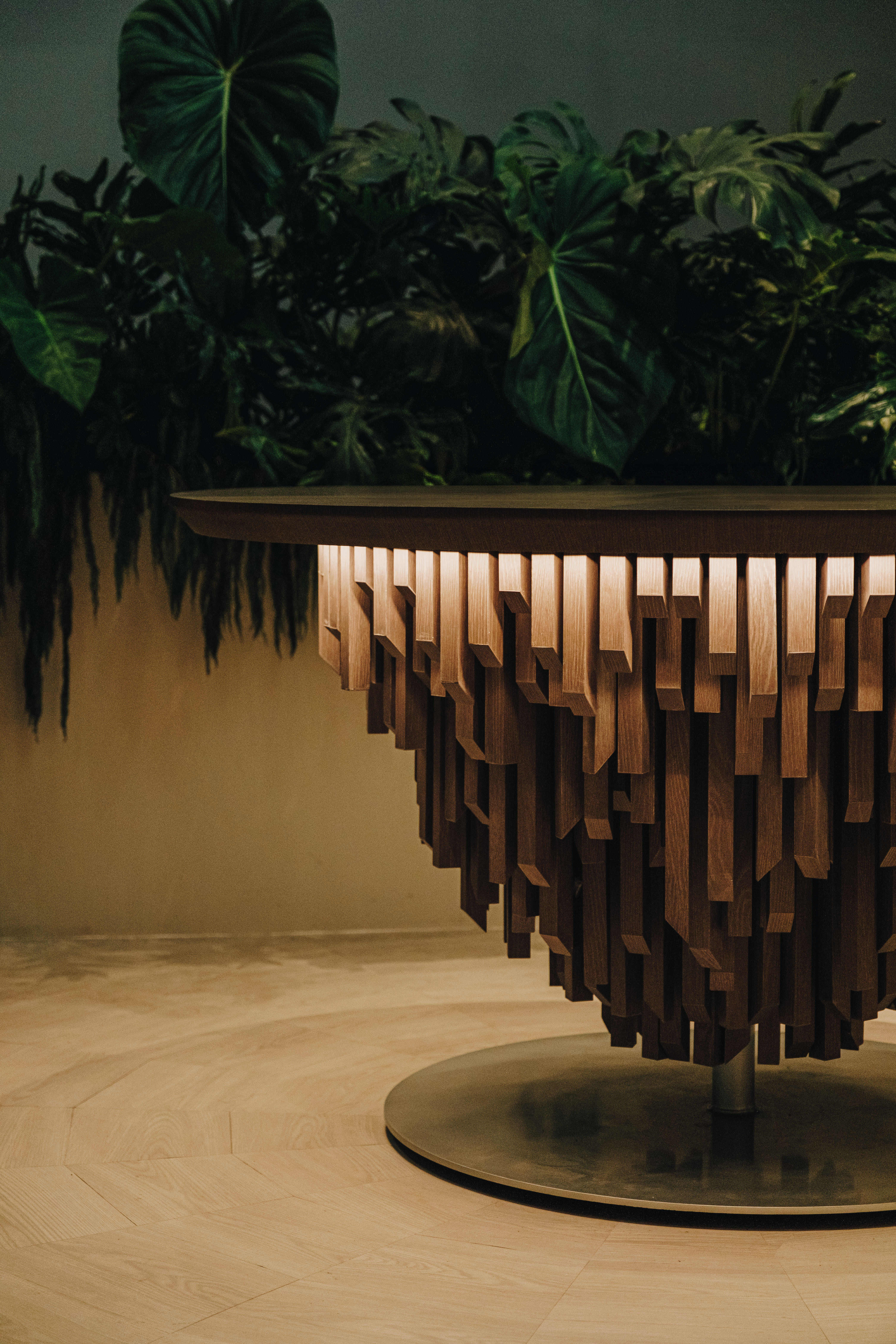
Written: Mengapa membawa budaya itu jadi penting?
KK: Kalau kita nggak bisa bawa itu jadi barang yang relevan di kehidupan sehari-hari kita, suatu hari nanti semuanya itu hanya akan jadi referensi di buku saja dan menghilang. Kita harus berusaha sebaik mungkin untuk mengartikan apapun yang tradisional itu masuk ke dalam kehidupan sehari-hari.
Yang juga sangat penting, kalau kita terus mendesain rumah misalnya, setelah 5 tahun, lama-lama jadi biasa saja. Ruang keluarga ada sofa, chandelier, lampu, meja, dan lain-lain. Kalau nggak dikasih arti apapun ke dalamnya, hanya akan jadi ruang dan furnitur. Dan jika kamu harus melakukannya sampai tua, berarti kamu akan merancang meaningless space selama berapa lama, 30 tahun? I don’t think so.
Identitas sebagai suatu bangsa itu penting. Kalau nggak, kita bisa lupa siapa kita. Barangnya impor, seleranya dari luar negeri, semuanya nggak ada yang lokal. Tentu saja ini tidak bisa saya terapkan di semua proyek, tapi sebisa mungkin akan saya lakukan. Sebanyak-banyaknya saya mengerti budaya Indonesia, saya rasa cuma tahu 1% aja. sisanya masih harus belajar.
Saya merasa kita dikasih talenta yang berbeda-beda, dan akan jadi utang buat saya kalau saya nggak mengembangkan talenta yang saya punya. Yang masak, masaklah yang enak. Sementara yang ngedesain, desainlah yang bagus.
Tentang Desain Booth TACO di Pameran Indobuildtech
Written: Bisa diceritakan tentang desain booth TACO ini?
KK: Desainnya dibuat berlapis untuk membangun rasa penasaran. Area paling depan adalah fasad, yang bersifat mengundang. Lapis kedua dirancang lebih gelap adalah discover and experience center. Di sini orang bisa melihat produk dan sedikit bentuk aplikasinya.
Ruang paling dalam dibuat terang, sehingga orang akan merasa terundang untuk masuk. Di area ini semuanya adalah aplikasi produk. Dibuat sebagai lounge, tempat TACO bertemu dengan para distributornya. Seluruh produk TACO diaplikasikan ada jadi meja, dinding, hiasan lampu, lemari, dan lainnya.

Written: Apa brief desain yang diberikan dari TACO?
KK: TACO membebaskan idenya mau seperti apa. Dari kami sendiri, karena tahun lalu booth-nya sudah mengangkat konsep fun, tahun ini kami ingin terlihat lebih sedikit high-end. Ingin memperlihatkan HPL itu bukan hanya sekadar material pengganti, tapi pemanfaatannya banyak.

Written: Berapa lama proses pembuatannya dan mengapa ingin berkolaborasi kembali dengan Taco?
KK: Prosesnya kurang lebih 3 bulan. Saya merasa TACO punya ambisi untuk memperkenalkan produknya dengan cara tidak konvensional dan selalu terbuka dengan ide baru. Di situ saya merasa punya irisan yang sama. Jadi kami ingin membuat desain yang baru.

